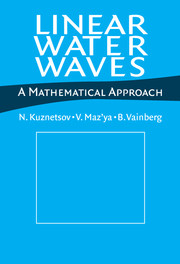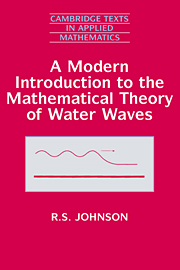Linear Water Waves
This book gives a self-contained and up-to-date account of mathematical results in the linear theory of water waves. The study of waves has many applications, including the prediction of behavior of floating bodies (ships, submarines, tension-leg platforms etc.), the calculation of wave-making resistance in naval architecture, and the description of wave patterns over bottom topography in geophysical hydrodynamics. The first section deals with time-harmonic waves. Three linear boundary value problems serve as the approximate mathematical models for these types of water waves. The next section, in turn, uses a plethora of mathematical techniques in the investigation of these three problems. Among the techniques used in the book the reader will find integral equations based on Green's functions, various inequalities between the kinetic and potential energy, and integral identities which are indispensable for proving the uniqueness theorems. For constructing examples of non-uniqueness usually referred to as 'trapped modes' the so-called inverse procedure is applied. Linear Water Waves will serve as an ideal reference for those working in fluid mechanics, applied mathematics, and engineering.
- Suitable both as a textbook for graduate students and as a reference book with a complete and up-to-date bibliography
- Covers all modern trends in the mathematical theory of water waves
Reviews & endorsements
"This work provides a self-contained and up-to-date...reference for those working in fluid mechanics and engineering." Mechanical Engineering
Product details
January 2005Adobe eBook Reader
9780511029400
0 pages
0kg
42 b/w illus.
This ISBN is for an eBook version which is distributed on our behalf by a third party.
Table of Contents
- Preface
- Part I. Time-Harmonic Waves:
- 1. Green's functions
- 2. Submerged obstacles
- 3. Semisubmerged bodies, I
- 4. Semisubmerged bodies, II
- 5. Horizontally-periodic trapped waves
- Part II. Ship Waves on Calm Water:
- 6. Green's functions
- 7. The Neumann-Kelvin problem
- 8. Two-dimensional problem
- Part III. Unsteady Waves:
- 9. Submerged obstacles: existence
- 10. Waves due to rapidly stabilizing and high-frequency disturbances
- Bibliography
- Name index
- Subject index.







